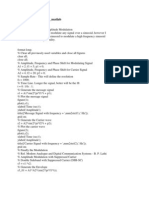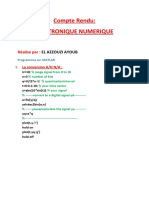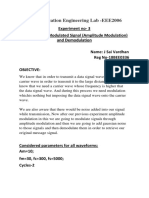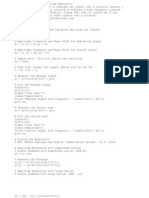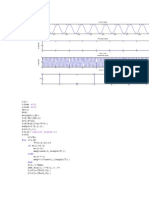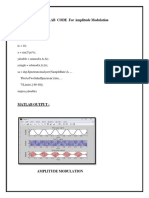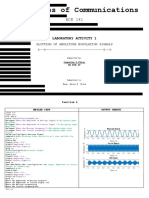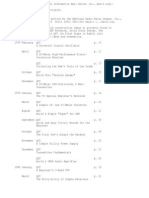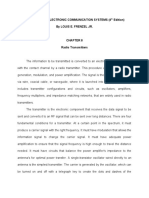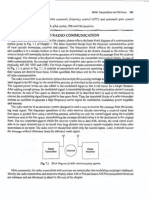0% found this document useful (0 votes)
79 views6 pages%modulation AM-DBAP (Amdsb-Tc) : %1. Le Signal Modulé y (T) Pour M 0.5
The document discusses amplitude modulation and demodulation using MATLAB. It provides code to generate a message signal, carrier signal, modulate the carrier with the message, and demodulate the modulated signal. It also contains similar code for frequency modulation and demodulation. The final section shows an example of phase modulation.
Uploaded by
Hamza ToumiCopyright
© © All Rights Reserved
We take content rights seriously. If you suspect this is your content, claim it here.
Available Formats
Download as PDF, TXT or read online on Scribd
0% found this document useful (0 votes)
79 views6 pages%modulation AM-DBAP (Amdsb-Tc) : %1. Le Signal Modulé y (T) Pour M 0.5
The document discusses amplitude modulation and demodulation using MATLAB. It provides code to generate a message signal, carrier signal, modulate the carrier with the message, and demodulate the modulated signal. It also contains similar code for frequency modulation and demodulation. The final section shows an example of phase modulation.
Uploaded by
Hamza ToumiCopyright
© © All Rights Reserved
We take content rights seriously. If you suspect this is your content, claim it here.
Available Formats
Download as PDF, TXT or read online on Scribd
/ 6



